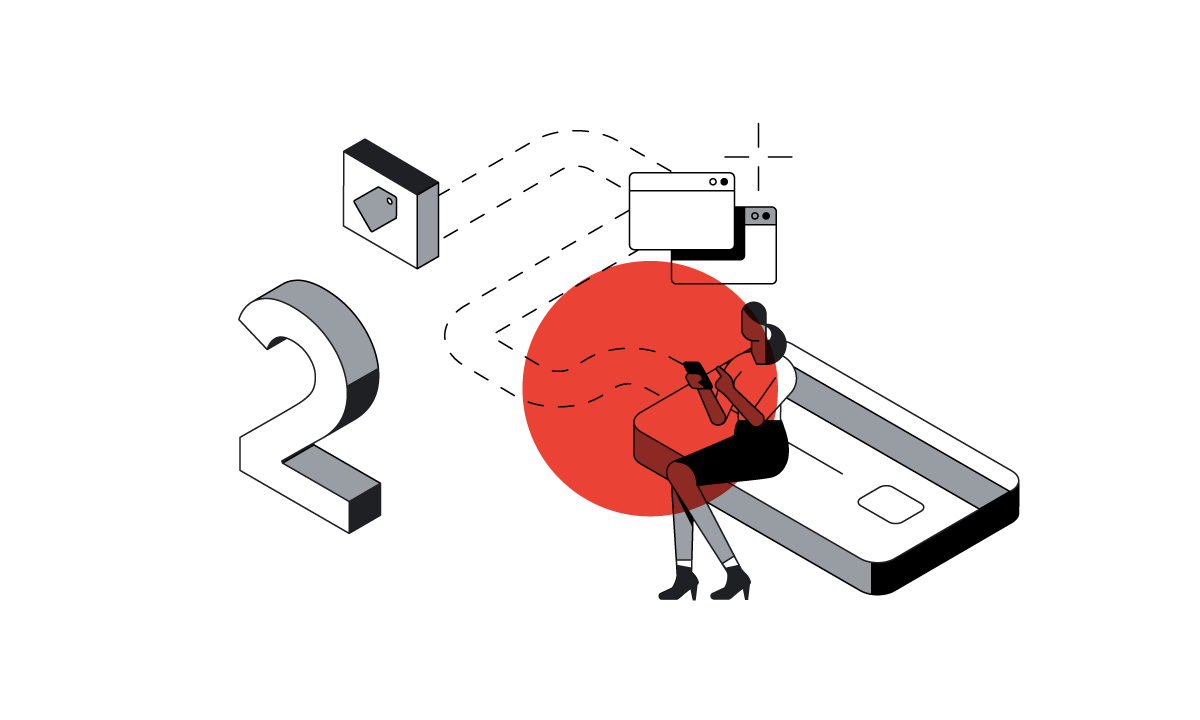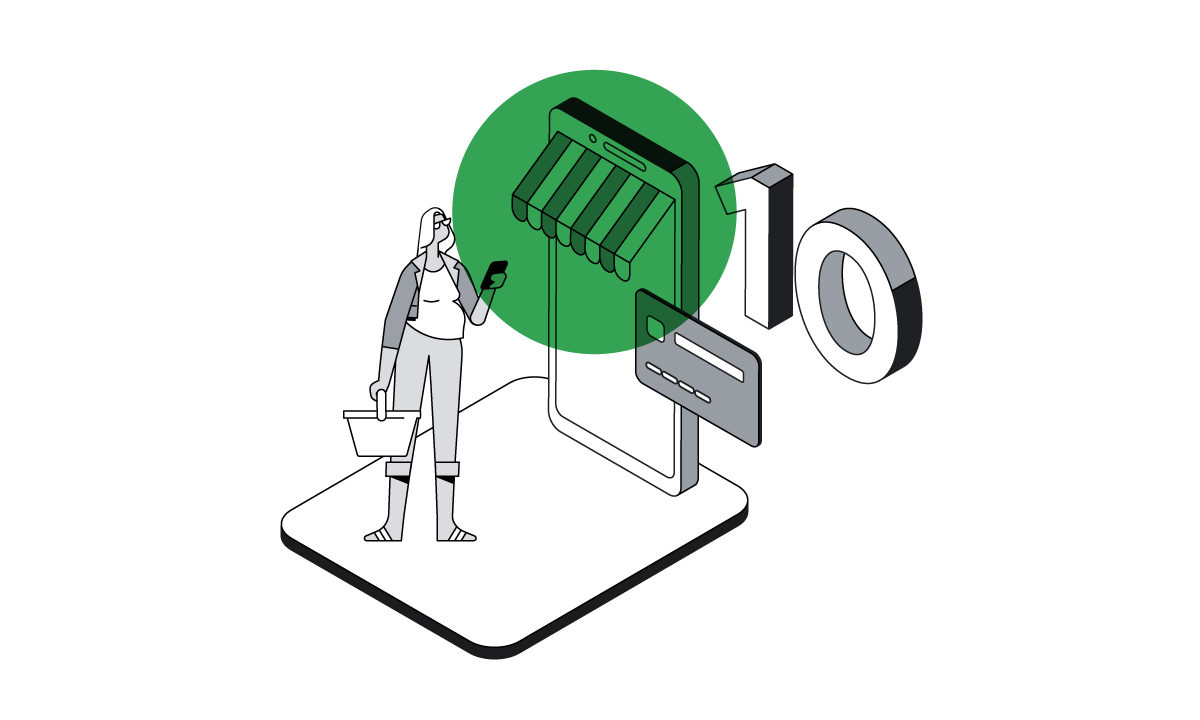2022 marks 10 years of Think with Google. To celebrate this milestone, join us as we reflect on what defines Google marketing; look back on a decade of illuminating insights, timeless articles, and memorable perspectives; and look ahead at what’s to come.
A lot has happened in the world of digital marketing in the decade since Think with Google launched. Take just one example: mobile marketing. In 2012, mobile users spent 127 minutes per day in apps. Today, in 13 countries, people spend more than four hours a day using apps. These types of changes have had enormous implications for the digital marketing world.
Despite all these and many other changes, some things remain relevant even a decade later. To mark our 10-year milestone, we took a look through our archive and found a selection of digital marketing articles that feel as fresh today as when they were written.

How 4 iconic TV campaigns went digital
It was 1994 when the first online ad graced our computer screens. But almost two decades later, marketers still hadn’t figured out the secret to making a classic internet commercial.
That’s why back in 2012, Google enlisted four industry veterans — people behind some of the most memorable TV ads — to partner with a team of technical whiz kids to reimagine their iconic campaigns for the internet era. The goal? “Shift the way the industry approaches digital advertising [and] come up with work that people will love, remember, and share 50 years from now.”
Read the full piece.

Why it’s time to say goodbye to the traditional marketing funnel
One of the first things we learn as marketers is the importance of the funnel — a linear journey that sees customers move from awareness to consideration to purchase. But in 2018, after analyzing thousands of users’ clickstream data from a third-party opt-in panel, Google researchers reached a surprising conclusion: The traditional marketing funnel was no more.
“We found that no two journeys are exactly alike, and in fact, most journeys don’t resemble a funnel at all,” Google’s Allan Thygesen wrote. “They look like pyramids, diamonds, hourglasses, and more.”
Read the full piece.

How Search became the world’s largest consumer panel
What’s the first thing you do when you’re looking for a new recipe? Or when you need to locate the closest ATM? Or when you want to find a local bar with outdoor seating? You do a Google Search.
That same behavior we see now was already well established back in 2013, when there were more than a billion Google searches each day. And just like it does today, it offered marketers new ways of reaching people throughout their customer journeys from research to purchase. As Google’s Sonia Chung eloquently explained, “It’s a vast virtual library of anonymized behavior data that can significantly augment the current methods brands use to learn about their consumers.”
Read the full piece.

5 lessons for turning data into compelling stories
“We’ve all sat through meetings, struggling to stay awake during presentations filled with cheesy stock images, confusing bar graphs, and pie chart after pie chart,” Google's Cole Nussbaumer wrote in 2012. But it doesn’t have to be that way.
“Even the driest content can come to life – if it’s presented creatively,” said Nussbaumer, who went on to write a book on the topic. Her five tips for telling compelling stories with data are as relevant today as they were a decade ago.
Read the full piece.

Everything marketers need to know about machine learning fairness
At a time where customers have come to expect hyperpersonalized and relevant experiences, machine learning (ML) has become an important tool for marketers.
But while ML allows brands to be more helpful to customers, Google research in 2018 revealed that when the training data is faulty, incomplete, or homogenous, it can lead to ML bias. ML bias “can damage brand perception and make years of thoughtful, inclusive messaging seem disingenuous or even manipulative.” A few important steps can help brands mitigate these risks and build fairness into their DNA.

The key to a company’s success is openness
In 2009, Jonathan Rosenberg, then-SVP of product management at Google, made a prediction: Companies that embraced a philosophy of openness — open technology and open information — would succeed at the expense of those that didn’t.
In an article written for Think with Google three years later, he explained that not only was his prediction accurate, but that it materialized far faster and had broader repercussions than he ever imagined. “I’d failed to anticipate the extent to which it would rewrite the rules across the private and public sectors.”
Read the full piece.

Why consumer intent is more powerful than demographics
For years, marketers used demographics as a proxy for people who might be interested in their products. But as Google’s then-Managing Director for Malaysia, Vietnam, Philippines, and New Emerging Markets Sajith Sivanandan argued in a 2018 piece that remains relevant today, demographics rarely tell the whole story.
Consider baby products. According to Google research, at the time, 50% of YouTube viewers of parenting topics in Malaysia were over 35 years old — outside a baby product brand’s typically targeted age bracket. Within these “antiquated parameters” of age group, stage of life, income, or location, Sivanandan suggested, marketers will seldom, if ever, address the true intentions of a potential customer. “Brands that want to win their next customer need to realize and respect their identities… this is the age of context and intent.”
Read the full piece.

What social scientists can teach mobile marketers
When we’re on the go and have to quickly make a purchase decision, we tend to focus on a few key criteria or product attributes. It’s something called the “narrowing effect,” and it could provide important lessons for mobile marketers.
“The fact that we can — and often do — use mobile devices while on the go is a huge differentiator between our online behavior on a laptop versus on a mobile device,” social scientist Dan Ariely wrote for Think with Google in 2016. “Because of this, some of the well-studied social science phenomena related to time pressure are particularly applicable in helping to understand mobile decision-making.”
Read the full piece.

Inclusive marketing is the future of marketing
In a diverse region like APAC, there’s more work that can be done by marketers to foster equity and inclusion. In fact, Search trends reflect an urgent need for change, revealing lingering inequalities, hidden desires, and evolving definitions of gender and sexuality.
At the same time, people are increasingly looking for brands that take a bigger stand. As Sapna Chadha, VP of Marketing for India and Southeast Asia, explained in 2021, “The expectation is now on brands to keep up — moving inclusive marketing from something nice for brands to do to something brands must do.”
Read the full piece.

Important lessons for embracing customer lifetime value
All too often, businesses take a myopic approach to their clients: What are they looking to buy right now? It’s no surprise that marketing strategies often follow suit, valuing customers only over the short term.
For Peter Fader, a Wharton professor of marketing, that’s a mistake. “When it comes to driving profitable growth in the long term, customer lifetime value is a metric that can no longer be ignored,” he and Neil Hoyne of Google wrote in a 2021 piece that shares five tips for using the important metric.
Read the full piece.
Look back on a decade of illuminating insights and get inspired for what's ahead:







